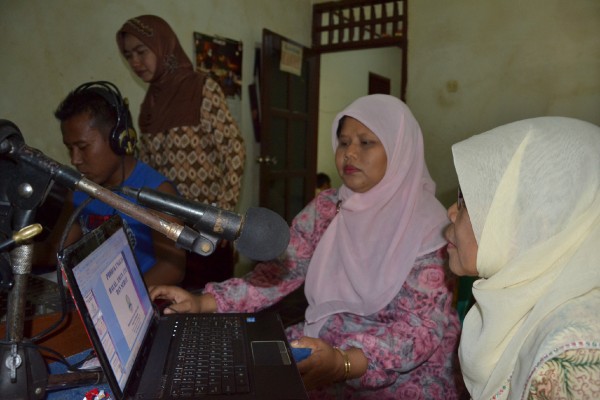A new Global Program on Avian and Pandemic Flu Communication is operating at the Johns Hopkins Bloomberg School of Public Health, Center for Communication Program (CCP). The Global Program signals CCP’s commitment to achieving a proactively prepared international avian and pandemic flu community through strategic communication.
“Although we wish we lived in a world without the threat of avian flu, we hope our work in strategic behavior change communications will be at the forefront of public health efforts to contain it,” said Dr. Jane Bertrand, CCP’s director.
Under the leadership of co-directors Shana Yansen and Basil Safi, the Global Program will draw upon the technical expertise of senior CCP staff Jose Rimon II, James Williams, and Doug Storey. The team will also work closely with partner institutions and organizations including Johns Hopkins University, USAID, UNICEF, World Bank, Food and Agriculture Organization of the United Nations, the Center for Disease Control, local governments, national stakeholders, and the media.
Highly pathogenic avian influenza, known as H5N1, is a potentially devastating threat to public health in countries worldwide, significantly impacting developing economies with reliance on commercial and backyard poultry producers. If the virus becomes pandemic in human populations, it will be catastrophic. According to Storey, both the 1918 outbreak, which killed more than 20 million people worldwide, and the 1987 Asian Flu outbreak originated with avian viruses that successfully made the leap to humans.
The establishment of the Global Program brings together years of work CCP has done around the world in response to Avian Influenza. CCP operates avian flu programs in Azerbaijan, Ukraine, Jordan, Indonesia, and Egypt. In Egypt, for example, the USAID-funded Communication for Healthy Living (CHL) project led by CCP provides technical assistance to Egypt’s Ministry of Health and Ministry of Information in their implementation of an avian flu communication response. Their goal was to develop a quick, unified and effective response to any future outbreak. Within hours of the confirmation of cases of the H5N1 “Avian Influenza” virus on February 17, 2006, all the major state-owned television channels were broadcasting the news to the public as well as airing an informative TV spot showing families how to protect themselves from the deadly virus. PARC Media Monitoring Services reported that the TV message reached 82% of Egyptian adults, or 34 million people, within a day after its first announcement.
On the domestic front, CCP is developing an internal communication program for the Johns Hopkins Enterprise to inform and prepare Hopkins’ employees and constituents about a possible pandemic influenza outbreak in the greater Baltimore/Washington area.
The Global Program on Communication will also house an interactive digital library and resource center for avian and pandemic flu communication. The resource center—which already contains some of the best materials developed from country programs, including TV and radio spots, posters, flipcharts and booklets—will continue to grow and serve health, communication and avian and pandemic flu professionals worldwide.
“Technology has greatly increased access to information for people around the world,” said Yansen. “One of CCP’s global initiatives is the development of an interactive Web-based toolkit in avian and pandemic influenza.” The tool is being developed in collaboration with international organizations including UNICEF, Food and Agriculture Organization of the United Nations, WHO, CDC, and the World Bank in response to avian and pandemic influenza, and is funded by the Government of Japan. With resources from all over the world, the tool provides access to essential Websites, documents, research studies and emergency-preparedness models for developing strategic avian and pandemic influenza communication plans.
NOTES:
Shana Yansen
Shana oversees CCP’s avian and pandemic influenza projects in Asia and two global projects as well as health communication programs in Bangladesh and Pakistan. Her technical expertise is in strategic planning, social marketing, entertainment education, community mobilization, and information technology for public health.
Basil Safi
Basil oversees CCP’s pandemic influenza projects in the Near East, Europe and Eurasia regions and has worked specifically on programs in Azerbaijan, Ukraine, Jordan, Egypt, and domestically in Baltimore. His concentrations are in environmental engineering, water/sanitation, and the integration of behavior change communication activities to meet the overall goal of public health improvement.
Center for Communication Programs (CCP)
With representatives in more than 30 countries, CCP partners with organizations worldwide to design and implement strategic communication programs that influence political dialogue, collective action, and individual behavior change; enhance access to information and the exchange of knowledge to improve health and health care; and conduct research to guide program design, evaluate impact, and advance knowledge and practice in health communication.



